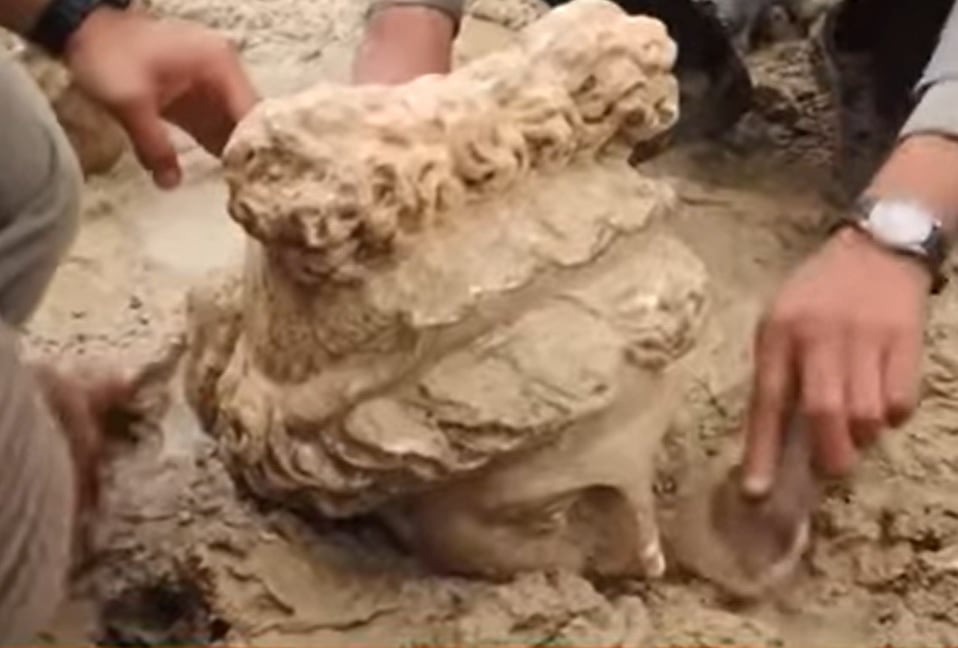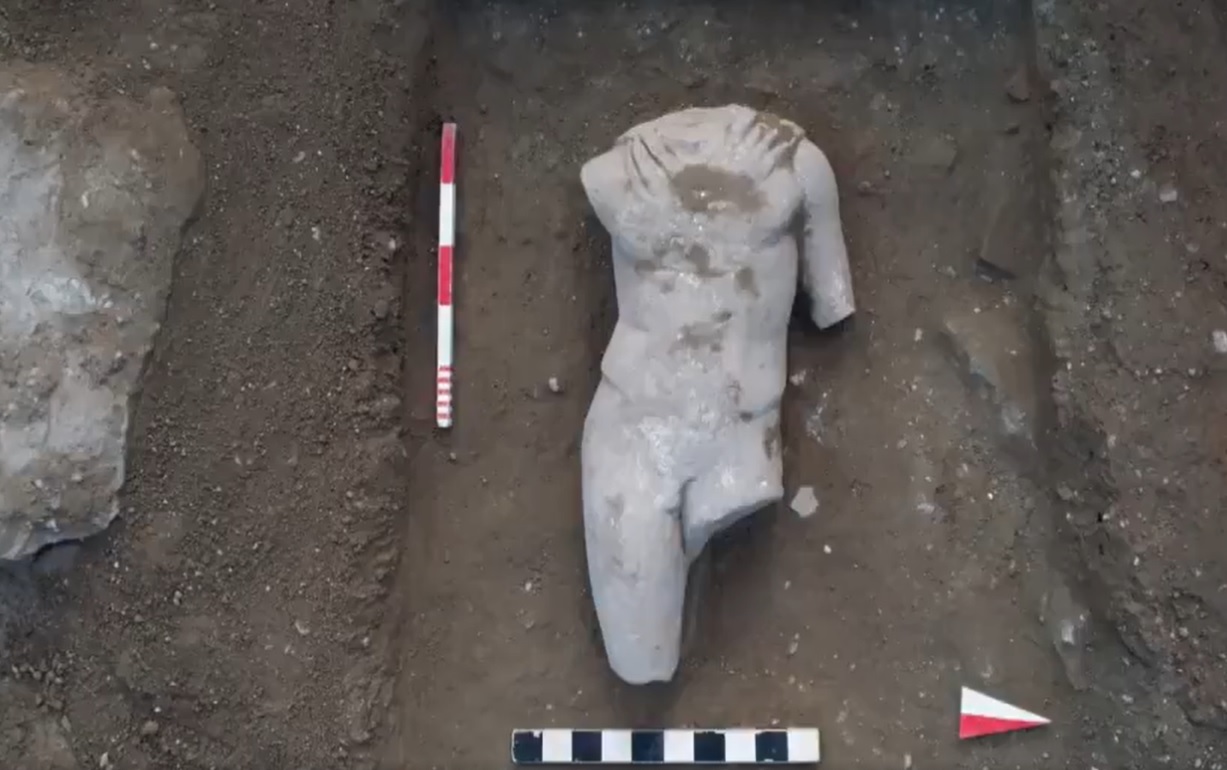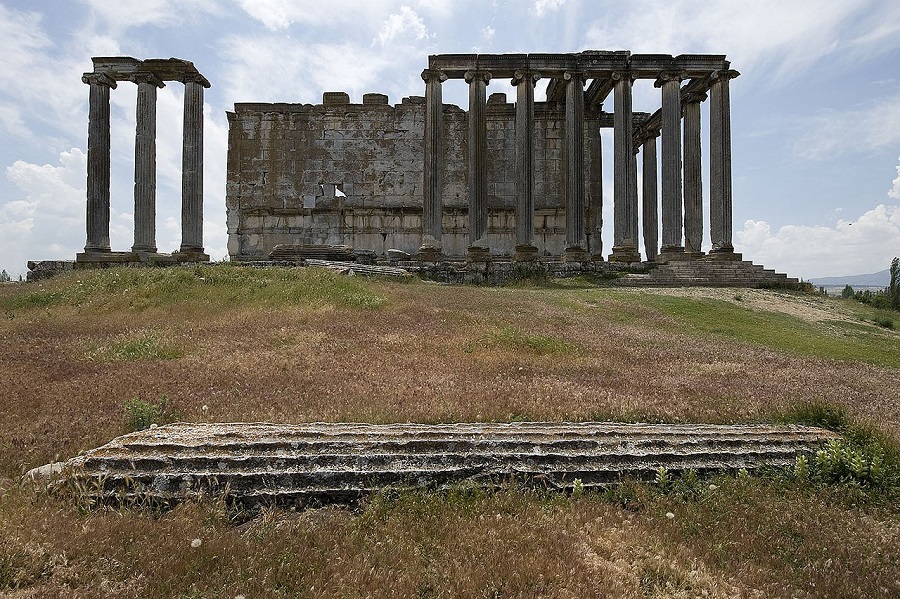
The statuary heads of Greek gods Aphrodite and Dionysus have been unearthed in the ancient city of Aizanoi in western Turkey, Anadolu Agency reported on Friday.
The heads of both Aphrodite, the goddess of love, and Dionysus, the god of wine, “are important findings for us, as they show that the polytheistic culture of ancient Greece existed for a long time without losing its importance in the Roman era,” excavation coordinator Gokhan Coskun told Anadolu Agency.
Noting that the statues’ bodies were found in a previous dig, Coskun, an archaeologist at Dumlupinar University, said the heads were unearthed during recent excavations in a creek bed in the ancient city of Aizanoi.
“The findings suggest that there may have been a sculpture workshop in the region.”

With a history dating back 5,000 years, Aizanoi, situated 50 kilometers (31 miles) from the Kutahya city center, was included in the UNESCO World Heritage Tentative List in 2012.
In August, statue of the ancient Greek goddess Hygieia, the goddess of health and cleanliness, was also unearthed in Aizanoi.

As is often seen in statues unearthed in Turkey, the head of the statue is missing. Coskun, who works at Dumlupinar University in central Turkey, said: “Unfortunately, (the head) hasn’t survived to the present day, but in its current form, we can see that this statue is about the size of a human.”
He added “During past digs in Aizanoi, finds related to Hygieia were also found. This situation makes us think that there may have been some construction and buildings related to the health cult in Aizanoi during the Roman era.”
Greek gods in the ancient city of Aizanoi
Aizanoi was an important political and economic centre in Roman times; surviving remains from the period include a well-preserved Temple of Zeus, unusual combined theatre-stadium complex, and macellum inscribed with the Price Edict of Diocletian. The city fell into decline in Late Antiquity.
Settlement in the area is known from the Bronze Age. During the Hellenistic period the city changed hands between the Kingdom of Pergamum and the Kingdom of Bithynia, before being bequeathed to Rome by the former in 133 BC. It continued to mint its own coins. Its monumental buildings date from the early Empire to the 3rd century.

The Temple of Zeus, situated upon a hill, was the city’s main sanctuary. Ceramic finds indicate local habitation from the first half of the third millennium BC.
Aizanoi’s theatre and stadium are built adjacent to each other and this combined complex is said to be unique in the ancient world.
Two sets of thermae have been identified. The first, between the theatre-stadium and the temple, dates to the second half of the second century and includes a palaestra and marble furnishings. The second, in the north-east of the city, was built a century later; floor mosaics depict a satyr and maenad. Rebuilt a couple of centuries later, it served as the bishop’s seat.






Comments
Post a Comment
Your opinion counts